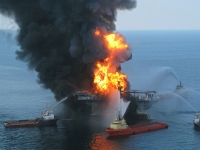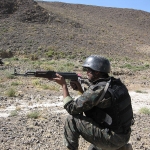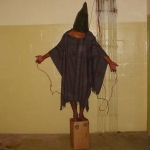Halliburton Admits Guilt in Gulf of Mexico Cover-Up

Deepwater Horizon offshore drilling unit on fire 2010
Halliburton has admitted that it destroyed evidence after the April 2010 Deepwater Horizon catastrophe in the Gulf of Mexico. The company has agreed to pay a $200,000 fine, make a donation of $55 million to the National Fish and Wildlife Foundation and accept three years of probation.
Deepwater Horizon - a drilling rig jointly owned by oil companies BP and Andarko Petroleum at the time - was deployed to search for oil from Macondo, a mile-deep underwater well in the Gulf of Mexico. In April 2010 the rig, which was being operated by contractor Transocean, caught fire, exploded, and sank, killing 11 workers. Houston-based Halliburton, which helped plan the drilling operation, was among those investigated for the disaster.
Over 87 days following the blowout the oil well spewed nearly five million barrels into the ocean 40 miles off the Louisiana coast until the well was successfully capped with cement. Almost 70,000 square miles of water and over 1,000 miles of coastline were polluted by oil slicks, scientists say. Coral reefs and dolphins in the area continue to show signs of ill health to this day.
In January 2013, BP pled guilty and agreed to pay a $4 billion fine. The following month Transocean pled guilty and agreed to pay $1.4 billion in fines and accept five years of probation. Halliburton is the third company to come before the government.
The issue that Halliburton was investigated over was whether the company did an adequate job on the cement and equipment that helped stabilize the drill pipe in the center of the hole.
Notably - before the blowout - Halliburton recommended that BP use 21 centralizers (metal collars that hold the pipe in place) but BP chose to use just six. Halliburton repeatedly used this decision as evidence that the oil company was at fault.
The plea agreement reveals that Halliburton ran two separate computer simulations after the blowout to compare the impact of using six versus 21 centralizers which showed that there was little difference. Halliburton then told its employees to "get rid of" the simulations, throwing a stumbling block in the way of the government investigators as to who was really to blame.
Halliburton's admission now raises questions whether flaws in Halliburton's cement job were more significant as well as about the blowout preventer (a device designed to clamp shut the well pipe in an emergency) which was manufactured by a company called Cameron.
Under yesterday's agreement, the U.S. Department of Justice says it will drop any further prosecution of the Houston-based company in return for the single guilty plea and the fines.
However the investigation continues - and more revelations may emerge on errors that were made and if they were criminal. Certainly a 2010 presidential panel that investigated the accident said that the catastrophe was preventable - stating that the companies involved had taken hazardous and time-saving risks.
Despite a six-month federal moratorium on drilling and a two-year lull after the BP explosion, the oil industry has since bounced back.
Last September, the Wall Street Journal reported that over 4,000 platforms are now pumping oil and gas from 35,000 wells via nearly 30,000 miles of pipelines in the region. BP alone currently has six rigs drilling and is still the largest player operating in the area. Transocean is reportedly negotiating a partnership that would lead to a contract for four ultra-deepwater drillships similar to Deepwater Horizon.
"The only thing Macondo did was delay the entry or delivery of some ultra-deepwater rigs," Leslie Cook, senior research consultant at Quest Offshore, told AOL Energy.
- 183 Environment



